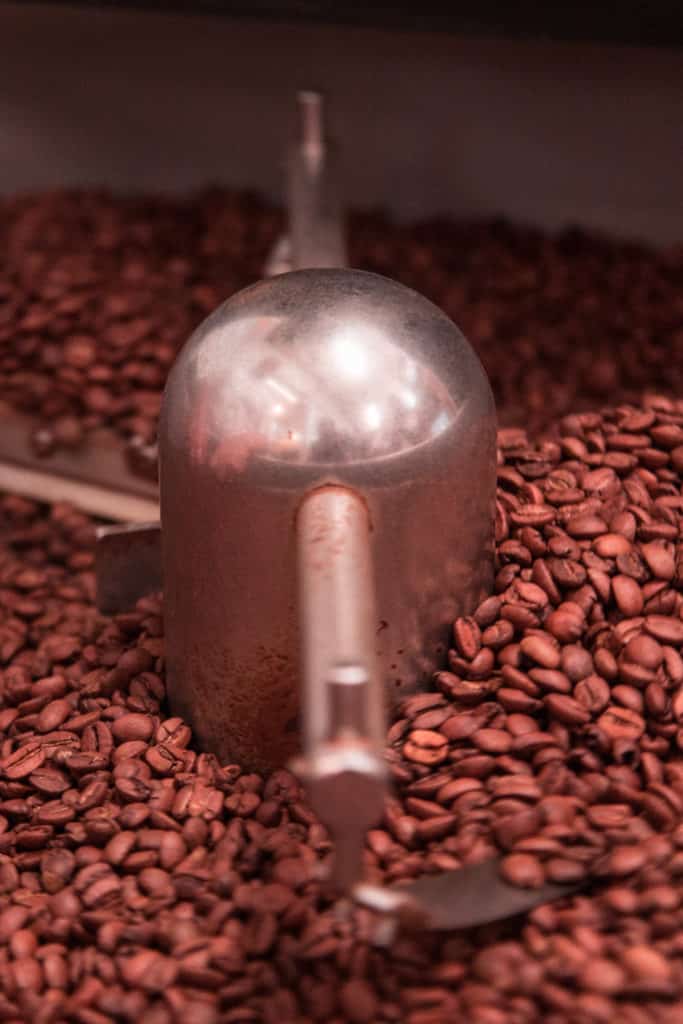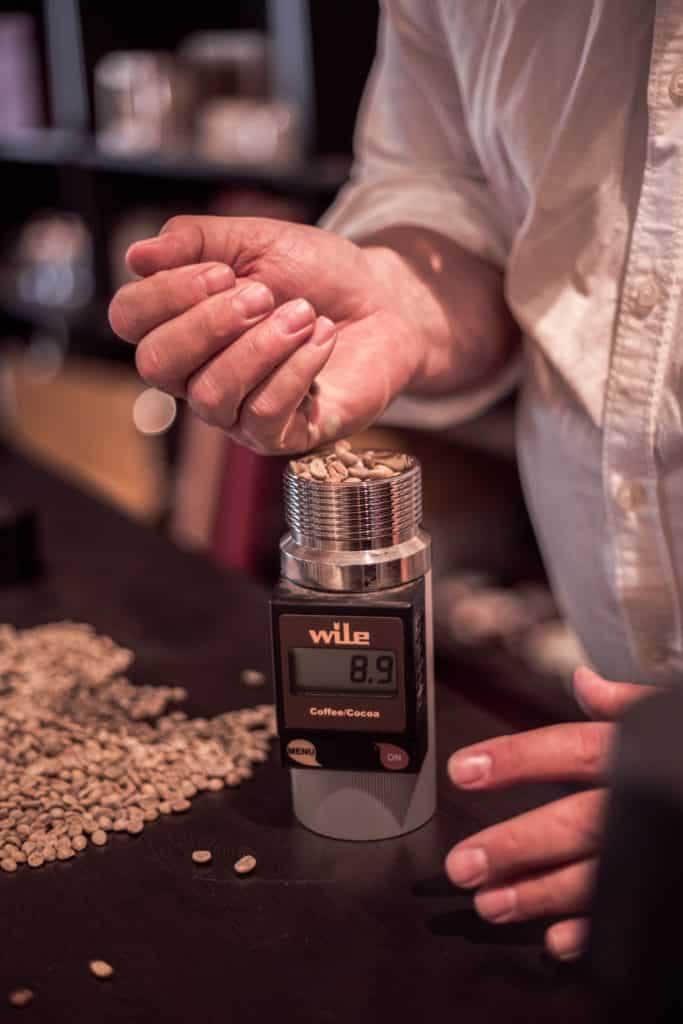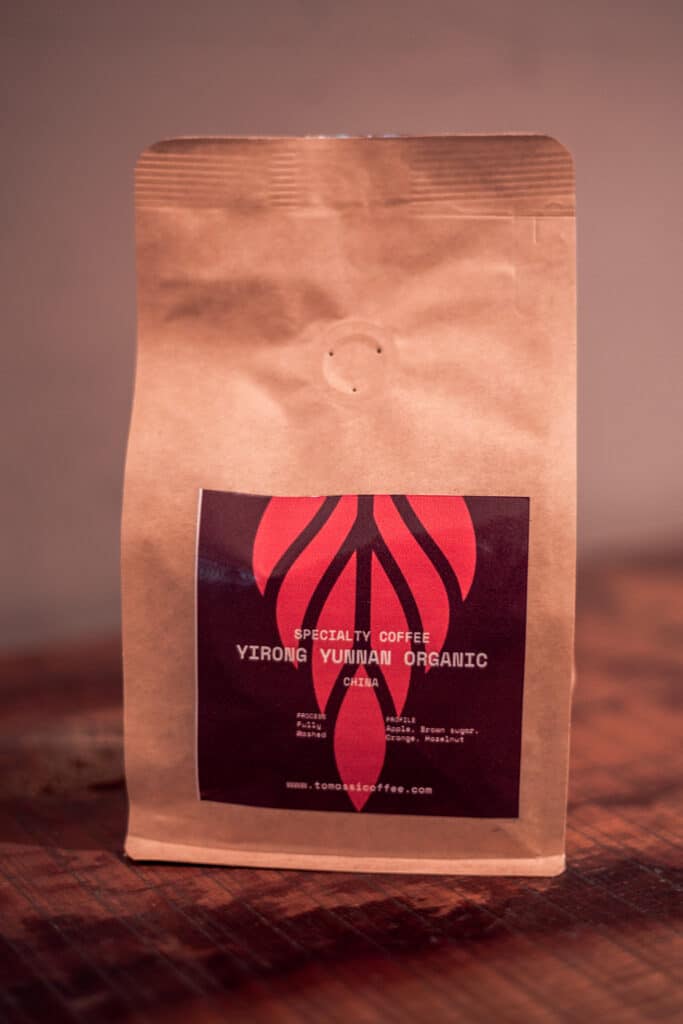No products in the cart.
Questo articolo è disponibile anche in: ![]() Italiano
Italiano ![]() English
English
THE ART OF ROASTING
APRILIA’S MICRO-ROASTERY

The mini-roasting plant, or, as Emanuele likes to call it, “the amusement arcade”, is the beating heart of Mr Tomassi’s roasting plant, where he carries out experiments and studies. Roasting coffee beans is an art that requires a lot of practice, experimenting with the basics of chemistry and physics.
There are two coffee roasters, one can roast up to 5kg at a time and the other not more than 500g. During the roasting process, the coffee beans are exposed to very high temperatures: 190 degrees for light roasts and 210 degrees for medium roasts.
Here, through a wise management of time and heat during the five-stage roasting process (pre-heating, drying, development of the aromas, caramelization and cooling), Mr Tomassi is able to ensure that the coffee produces between 800 and 1000 different aromas, which he then adjusts and balances until every cup of coffee becomes a delightful experience.
“I’m here as the messenger of a thousand-year-old drink that we are finally able to exploit and make the very most of in as many ways as there are plantations, altitudes, latitudes and the tastes of those who produce it. My ambition is to quite simply make people dream over a cup of a coffee”, Emanuele says.


THE COFFEE ROASTING PROCESS
During the pre-heating stage, the roasting machine is turned on and has to reach a temperature of around 190 degrees It is then up to the ability and experience of the roaster to find the ideal temperature for the kind of roast that is desired. For instance, a filter coffee has a suggestion of citrus and fruit, while an espresso needs a nuance of chocolate; filter coffee requires a roasting time from between 8 to 12 minutes, while an espresso needs up to 15 minutes.
The drying process is a key moment as the coffee beans go down into the drum where they absorb the heat (endothermic stage) and reduce the temperature inside the cylinder. The beans begin to change colour, going from yellow to cinnamon, until they acquire the desired colour.
The ability of the roaster plays an important part at the aroma development stage: very few people know that coffee can develop from 800 to 1000 aroma compounds as it roasts, more than the 600 typically developed by wine! During this stage, the roasting process can cause the release of more complex aromas by carefully managing the time and temperature of the roasting curve. This is the moment when the Maillard reaction starts: a chemical process that describes the reaction of sugar and amino acids at high temperature and which is also responsible for the beloved coffee aroma. At this point, it is possible to hear the first crack, similar to the sound of corn popping, and the beans double in size.
The final stage is that of cooling, during which the coffee beans are placed in a specific tank where they are brought down to the temperature of the environment in no more than four minutes.